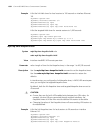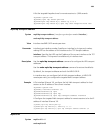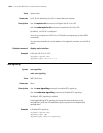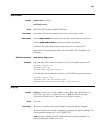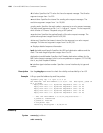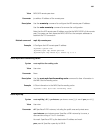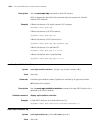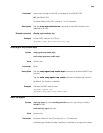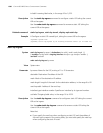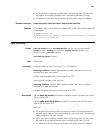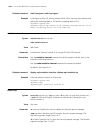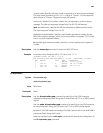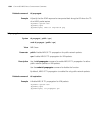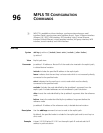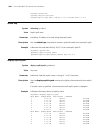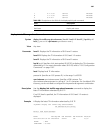
1560 CHAPTER 95: MPLS BASICS CONFIGURATION COMMANDS
in-label: Incoming label value, in the range 16 to 1,023.
Description Use the
static-lsp egress command to configure a static LSP taking the current
LSR as the egress.
Use the
undo static-lsp egress command to remove a static LSP taking the
current LSR as the egress.
Related command: static-lsp ingress, static-lsp transit, display mpls static-lsp.
Example # Configure a static LSP named bj-sh, taking the current LSR as the egress.
<Sysname> system-view
[Sysname] static-lsp egress bj-sh incoming-interface serial 2/0 in-label 233
static-lsp ingress
Syntax static-lsp ingress lsp-name { destination dest-addr { mask | mask-length }}
{ nexthop next-hop-addr | outgoing-interface interface-type interface-number }
out-label out-label
undo static-lsp ingress lsp-name
View System view
Parameter lsp-name: Name for the LSP, a string of 1 to 15 characters.
dest-addr: Destination IP address of the LSP.
mask: Mask of the destination IP address.
mask-length: Length of the mask for the destination address, in the range 0 to 32.
next-hop-addr: Address of the next hop.
interface-type interface-number: Specifies an interface by its type and number.
out-label: Outgoing label value, in the range 16 to 1023.
Description Use the
static-lsp ingress command to configure a static LSP taking the current
LSR as the ingress.
Use the
undo static-lsp ingress command to remove a static LSP taking the
current LSR as the ingress.
Note that:
■ If you specify the next hop when configuring a static LSP, and the address of
the next hop is present in the routing table, you must also specify the next hop
when configuring the static IP route.



